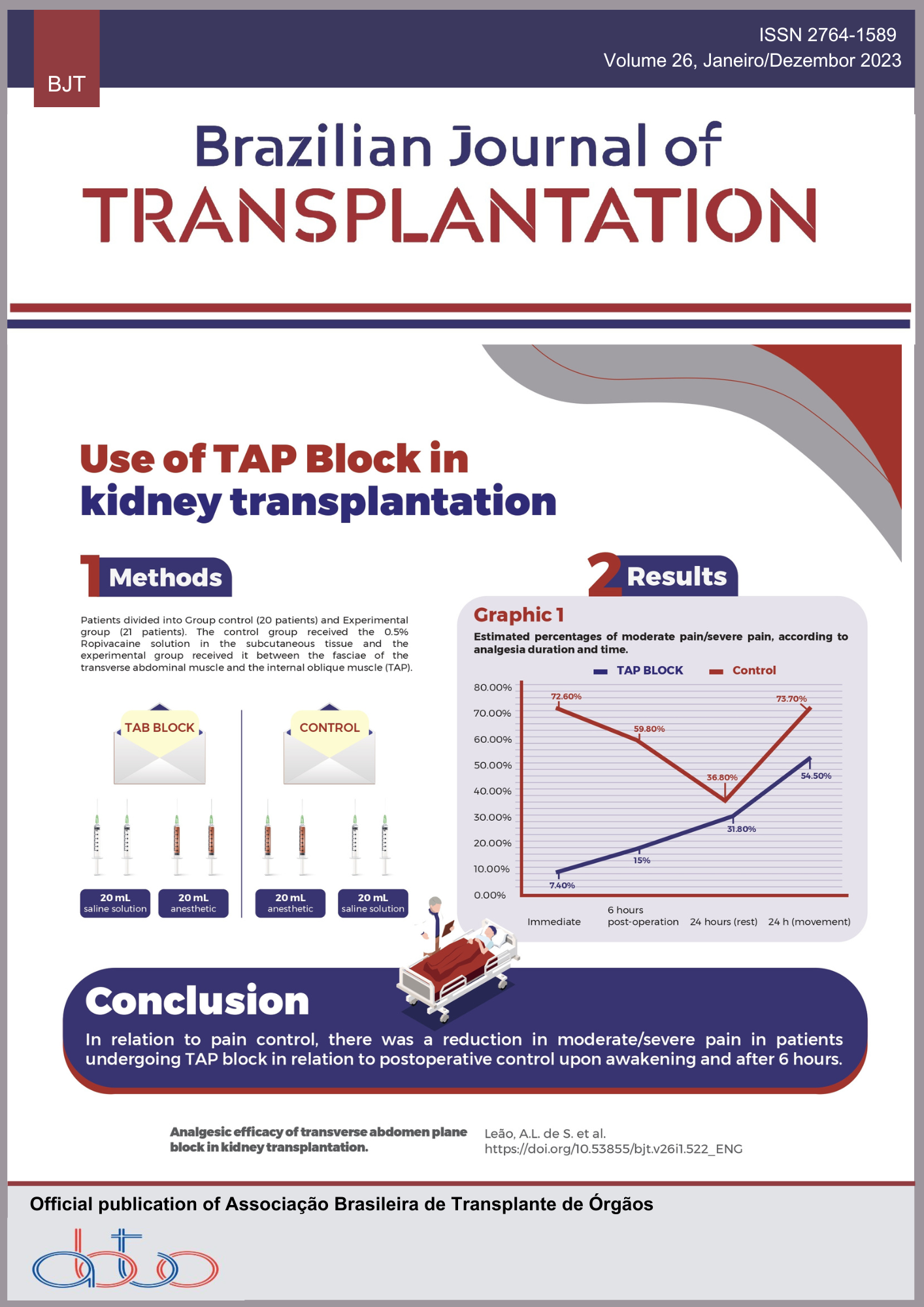The Halifax flow Crossmatch Protocol Results According to the Class and MFI of the DSA
Keywords:
Virtual Crossmatch, Flow Cytometer Crossmatch, Single Antigen Beads, Halifax ProtocolAbstract
Introduction: The main strategy to reduce the immunogenicity of transplanted grafts is to seek maximum compatibility betweenalloantigens in the donor-recipient pair. It is understood that the virtual crossmatch (VXM) can be a good tool in the evaluation of the donor / recipient pair and that a broader application of these protocols will improve the pre-transplant immunological risk assessment. The aim of this study was to correlate the physical flow crossmatches results, looking at different mean fluorescence intensity (MFI) values of the donor specific antibodies (DSA), and the probability of a positive crossmatch. We also aimed to validate this tool using a well standardized flow crossmatch protocol. Methods: We performed a total of 15,217 FCXM between 2015 and 2019. All were tested by the Halifax Flow Cytometer Crossmatch (FCXM) protocol, with cells from deceased donors and serum from renal recipients. For this analysis we selected only samples that had one or two DSA per locus (N = 1,081), when the MFI was above 1,000, and they were divided according to the allelic group recognized by the antibody (anti-HLA-A, B, C, DR or DQ) looking at the probability of a positive crossmatch with different MFI values of the DSAs. Combinations among them were alsoanalyzed in the same way (N=175). Results: In the presence of an exclusive DSA against the allelic groups A, B and DR, with an index MFI above 5,000, all the FCXM were positives. With exclusively antibodies against groups C or DQ, all cases with DSAsabove 15,000 MFIs were positives. With two or more DSAs anti A and/or B, and/or DR, when their MFIs sums exceeded 5,000,all FCXM results against B cells were positive. The presence of anti-Class I DSAs (A, B and A+B), regardless of the MFI value, was responsible for 71% (N=424 of 601) of the T cell positivity and 77% (N=460 of 661) in the B cell crossmatches. The presence of only anti-Class II DSAs (DR and DQ) accounted for 55% (N=168 of 303) of FCXM positivity in B cells. The overall mean of the MFI of the DSAs was higher in the FCXM positive group when compared to negative crossmatch. The group with sum of DSAs A (N=217) showed that when the sum was 4,000 MFI or higher, there was a 24 times higher probability for a positive B cell crossmatch when compared with lowers MFIs. Conclusions: Our results show a strong association between the DSA MFI and the FCXM result. The data here presented confirm the results of our previous studies, justifying the VXMstandard used by our center, proving to be a good tool to streamline the selection of transplant recipients and facilitate the sharing of organs from national donors.
Downloads
Downloads
Published
How to Cite
Issue
Section
License
Copyright (c) 2023 Tiago Schiavo, Juliana Montagner, Elizete Keitel, Anna Greenshields, Robert S Liwski, Jorge Neumann

This work is licensed under a Creative Commons Attribution 4.0 International License.









